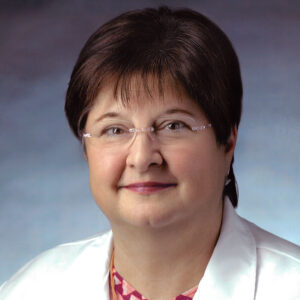By Santa J. Bartholomew M.D. FAAP, FCCM
See Corresponding Journal Article: Shaken Baby Syndrome
A baby arrives at Metro Hospital, the infant is approximately 4 months old. He is accompanied by his mother and grandmother. The grandmother has been encouraging the baby’s mother to bring the baby into the emergency room since for the last 24 hours the baby has cried relentlessly stopping only for a few short stints of sleep. The mother agreed to bring the baby into the emergency room since she had struggled to wake him up. She also reports that the baby has refused to nurse this morning and when he nursed yesterday, he vomited most of it. He still having wet diapers but less than usual.
Upon arrival, his vital signs are as follows.
HR: 110
BP: 84/35
Resp: 24
Temp: 98.5
O2: 98% on room air
History: Aside from the details of the baby’s symptoms the following information was shared with the triage nurse. The mother of the baby is a 25-year-old single mother. She lives with her own mother who provides childcare while she works at a local restaurant. She has worked for the last 3 days from 7AM- 3PM. Grandmother reports the crying started yesterday late morning. Aside from baby, his mother and his grandmother, grandmother’s boyfriend also lives in the home. Both grandmother and her boyfriend. The grandmother’s boyfriend “Tom” is a corrections officer in a juvenile facility. He works nights and arrives home from work around 8AM. Yesterday morning the baby’s grandmother had an appointment so assigned Tom to watch the baby when he got home from work. When grandmother arrived home, she found Tom frustrated since the baby had been fussy and Tom had not been able to sleep. He went to bed immediately since he had to return to work again that night.
Baby sees Dr. Smith and is up to date on his vaccines. He was a NSVD weighing 7lbs 2 oz. He went home in one day. He has been very healthy.
Physical Exam: The physician in the Emergency Room did find the baby to be slightly “sleepy” but mom explained that it was his naptime. He was dehydrated with dry mucus membranes and decreased urine output, so an IV was started and a bolus of IV fluids were started. The baby is given a full head to toe exam with no findings.
Current weight: 15 lbs
After awakening the baby was given a PO challenge of 2 oz of Pedialyte®. The baby immediately vomits the Pedialyte and begins to moan. After this concerning finding labs were drawn including a CBC and CMP.
CBC | BMP |
RBC 4 | Potassium: 4.5 |
Hgb 8 | Sodium: 135 |
Hct 24 | Calcium: 9.0 |
MCV 80 | Chloride: 6 |
MCHC 33 | Albumin: 4.5 |
Plt: 255 | BUN: 26 |
| Cr: 0.8 |
Given the normal MCV and and low Hemoglobin and Hematocrit it was determined that this was suspicious enough to perform a CT scan on the baby’s brain. He was transferred to radiology and sedated.
The following is the result of the scan:
“Non-contrast-enhanced computed tomography coronal reconstructed image well demonstrates high density subdural hemorrhage adjacent to the falx and tentorium as well as mild scalp swelling with hemorrhage. Ill-defined, decreased attenuation of the parenchyma suggests an acute edematous lesion. The bone window setting image clearly shows no fractures. Coronal T2-weighted image (T2WI) shows hemorrhagic contusion of the left temporal lobe, extra-parenchymal fluid or hemorrhage, and increased signal intensity at the parasagittal areas suggest watershed injury. Diffusion restriction is mainly distributed in parasagittal areas and posterior thalami, although other parts of the brain are involved”
Cheon, et al
A chest and abdominal CT scan was done given the results of the head CT: Both were normal aside from fractured ribs 5 and 6 on the right.
The baby was transferred to a tertiary care center immediately and Child Protective Services was called. The mother and grandmother were informed of the findings and the likelihood of abusive head trauma, specifically shaken baby syndrome.
References:
Cheon, J. E., & Kim, J. H. (2022). Imaging of Abusive Head Trauma : A Radiologists’ Perspective. Journal of Korean Neurosurgical Society, 65(3), 397–407. https://doi.org/10.3340/jkns.2021.0297





